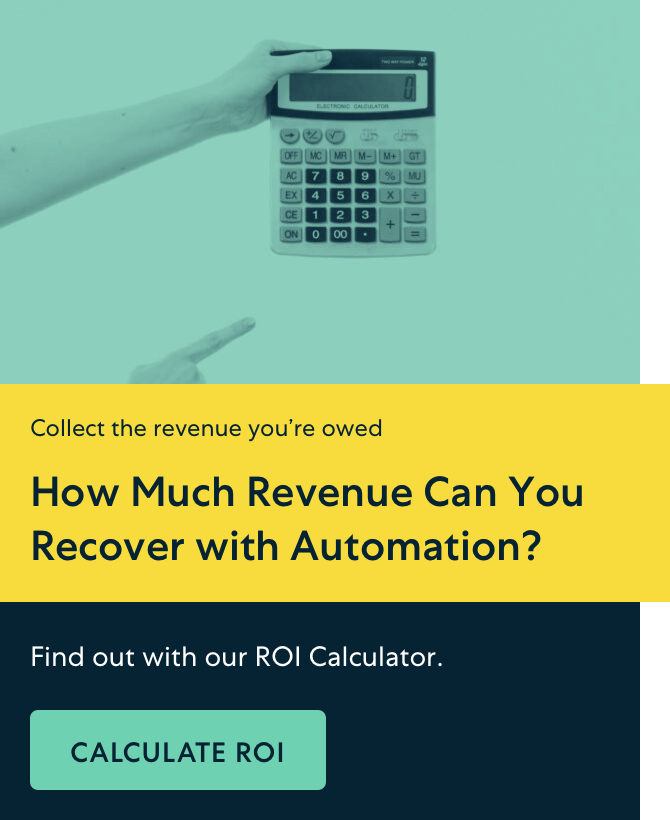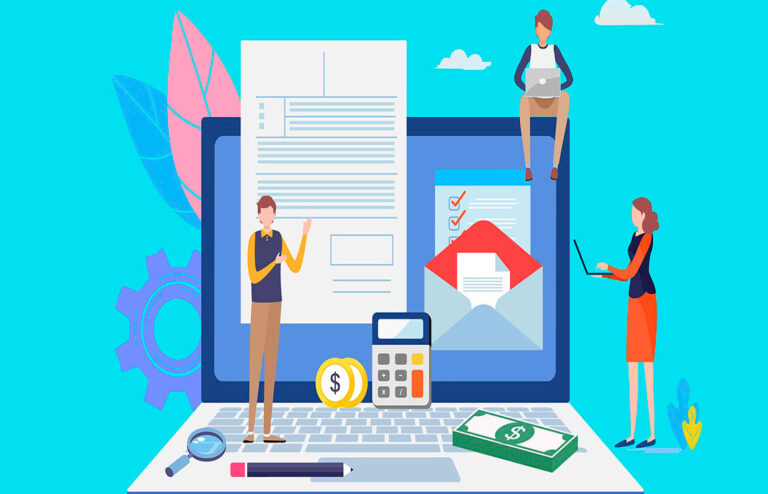Traditional B2B software that require on-site servers, specialized IT staff, and constant maintenance are becoming a thing of the past.
They are being replaced by cloud-based B2B software applications that don’t require expensive on-premise hardware and can be easily accessed by anyone with an internet connection.
In this article, you will discover how B2B SaaS works, examples of high-flying B2B SaaS companies, and how you can leverage relevant SaaS products to improve your business.
Let’s get started.
TL;DR
- B2B SaaS is a business model where a software company offers access to its cloud-based software applications to corporate customers over the Internet.
- B2B SaaS companies can offer one of seven SaaS pricing models to customers, and the model adopted by each company depends on the needs of its customers and the peculiarities of its industry.
- There are tens of thousands of B2B SaaS brands on the market, including reputable brands like Stax Bill, Salesforce, Slack, Hubspot, and Microsoft 365.
What is B2B SaaS?
The term B2B SaaS is a combination of two acronyms, B2B (business-to-business) and SaaS (Software-as-a-Service).
B2B describes companies that sell their products and services to other businesses (corporate customers), instead of selling to consumers.
SaaS describes software vendors that allow users to access their cloud-based software applications through a web browser instead of downloading and installing the product on their computer.
When you combine the definitions of both terms, B2B SaaS is a business model where a software company offers access to its cloud-based software applications to corporate customers over the Internet.
Cloud-based means the software company’s applications are hosted in remote data centers connected to the global internet, which allows users from all over the world to access and leverage the features of the software tool on any device.
The Evolution of B2B SaaS
The B2B SaaS market has grown exponentially since Salesforce launched as the first SaaS product in February 1999, and it’s projected to grow to $702.19 billion by 2030.
Below we will explore the key milestones in the development of B2B SaaS from the early years when it was seen as a mere fad to its widespread adoption today.
The 1960s: the time-share era
Computing in the early 1960s took a lot of time and the only way to share data stored on one computer with another was to record it onto a magnetic tape and send it to the site of the other computer via post.
The impracticality of this system led to the introduction of time sharing. The method was developed at MIT and it was the first version of the modern internet. It used multiprogramming to allow multiple individuals at different terminals to use a small portion of a single computer at the same time.
The 1970s to 1990: the personal computer and on-premise software era
Improvements in computer hardware technology over the decades led to smaller and less expensive computers. Software development also advanced and early SaaS software was packaged in CD-ROMS to be installed physically on each computer.
However, the need for constant software updates and hardware maintenance made on-premise software costly and inefficient for enterprises who used them at scale.
The early 1990s: the rise of the global internet
Tim Berners-Lee’s invention of the World Wide Web at CERN in 1989-1990 spurred the Web 1.0 era in which the Internet became more widely available to the public. The first set of popular internet-based companies like Yahoo and Netscape emerged during this era.
Netscape developed the Secure Sockers Layer (SSL) Protocol in 1995 to ensure data integrity when information is transmitted on the internet. Soon companies like Amazon and AuctionWeb (eBay) leveraged that technology to launch online platforms where people can buy and sell products online, without fear of their data being compromised.
The late 1990s: the rise of online cloud and SaaS
The growing ubiquity of the internet made it feasible for software companies to store their applications on remote servers and offer them to users anywhere via the internet.
Salesforce with its cloud-based CRM software was the first to utilize the B2B SaaS model as an alternative to on-premise software. The platform soon achieved record growth, but there were still many business owners at this stage who weren’t convinced about the utility of SaaS platforms.
The 2000s to present: the widespread adoption of SaaS platforms
The internet continued to evolve and bandwidth limitations were lifted, which made cloud services faster and more reliable. SaaS platforms gained more traction and soon, household traditional software brands like Microsoft and IBM started to move their software applications to the cloud.
Today, there are B2B SaaS products for most business applications, and new ones are being introduced each year.
How B2B SaaS Works
Any small business or enterprise interested in using a cloud-based software application will have to pay a subscription fee to access the online platform.
That fee will grant access to the SaaS platform for a defined period, and the business customer must pay a recurring subscription, monthly or yearly to retain access to the software application.
This is in contrast to traditional on-premise software where you purchase the license to the software and own it in perpetuity.
B2B SaaS companies usually offer flexible payment plans to their customers, and the model adopted by each company depends on the needs of its customers and the peculiarities of its industry.
There are seven primary SaaS pricing models and we will explore each of them below.
(NOTE: There are also hybrid pricing models that combine the features of two or more of the pricing models we will explore below. This is done to offer more flexibility to customers.)
Freemium pricing model
This model gives users a basic version of the software solution for free with the option to subscribe to a paid plan for access to more robust platform features.
The advantage of the freemium pricing model is that it lets you test the software platform to see if it meets the needs of your business before making any financial commitment.
Tiered pricing model
It’s the most common SaaS pricing model and users are allowed to pick from multiple pricing plans, each with its own package of features and services.
The beauty of this model is that it gives you the flexibility to select the pricing plan that best fits your budget. You will also avoid paying for features that are not needed at this current stage of your business.
Flat-rate pricing model
This model offers a single price for access to all the features and services available on the software platform. There is no tiered pricing or optional add-ons.
This model can be beneficial if you have a large team, and each user must access the platform individually.
When you are paying a fixed sum, you can have as many users as you want on your account without having to pay any extra fee.
Pay-per-seat pricing model
In contrast to the flat-rate model, the pay-per-seat model charges a fee for each user who accesses the software through your account. The more users in your team, the higher your subscription fee.
This model benefits organizations who want transparency into their costs as they scale the size of their team.
Pay-as-you-go pricing model
This model charges customers based on their usage of the software tool. It’s often used by communications platforms (messages and calls) and hosting providers.
The advantage of this model is that you only pay for what you consume, which ensures you are getting full value for your money.
Credit-based pricing model
In this model, customers buy credits upfront from the SaaS provider that they then use to pay for digital products, services, and features on the SaaS platform.
This model works when the SaaS company offers a product that doesn’t require continuous use. That way customers can buy the product or service with their credit without any pressure to use it immediately before the subscription plan runs out.
For example, Audible members must purchase credits to buy permanent access to popular, bestselling audiobooks. Each book costs one credit.
Custom pricing model
This billing model allows each customer to negotiate a subscription price with the SaaS provider based on their specific needs.
The advantage of this model is that it lets enterprise customers get a subscription package with features tailored to the unique needs of their business. They will also be able to save costs by negotiating for a lower price per user.
Example Companies in the B2B SaaS Space
There are tens of thousands of B2B SaaS brands on the market, but we will only be able to cover 10 high-flying SaaS companies in this article.
1. Stax Bill
Stax Bill is an automated recurring billing and payment SaaS solution for subscription-based companies.
It takes charge of repetitive manual accounting and financial processes like invoicing, billing, and collections so you can have the time to concentrate on big-picture strategy.
Stax Bill can drastically increase your billing efficiency by up to 80% and save you about 40 hours a month.
Case Study
bitHeads, inc, a custom enterprise software developer and Backend as a Service (BaaS) provider for the gaming industry, leverages Stax Bill (formerly Fusebill) to automate billing for its complex usage-based pricing model.
Stax Bill seamlessly calculates each customer’s charges based on their usage and pricing plan and bills them automatically. This automated bill collection has increased revenue recovery by 5-10% and given the company clarity on how much it earns from its many products and pricing plans.
2. Salesforce
Salesforce CRM (customer relationship management) is a suite of cloud-based software applications that help businesses automate sales and marketing processes. It also offers a large number of third-party integrations.
Case Study: Grammarly uses Salesforce’s Einstein Account Insights to identify high-quality leads and automatically assign them to the best-qualified salesperson. This has helped to shorten the time it takes to close leads from 90 to 30 days.
3. Shopify
This Canadian company offers an all-in-one eCommerce platform that lets users with no coding experience build and launch online stores in a few hours. You can list as many products as you want and sell them via any channel on the Internet.
Case Study: Abode Living, a luxury bed linen store, uses Shopify Plus to offer customers a unique online shopping experience and expand to international markets. It managed to increase its average order value by 25% since its switch from WooCommerce to Shopify.
4. Dropbox
Dropbox is a cloud storage solution that lets users store their files, images, and videos. You can access your files on Windows, macOS, Android, and iOS devices, and collaborate with your colleagues to edit your content.
Case Study: InVision is an online whiteboard and productivity tool used by companies to turn static designs into powerful prototypes in minutes. The remote company leveraged Dropbox Business for smoother collaboration between its teams based across multiple time zones.
5. Slack
This messaging and collaboration platform has transformed the way teams communicate in the workplace. It lets users set up channels where team members can have group or private discussions, and share files.
Case Study: Flatiron, a health-tech company with several cancer centers, uses Slack to create detailed profiles for each of its 1,200-plus employees. This provides employees with critical information about their remote teammates, empowering them to work better together even though they don’t share a physical office space.
6. Xero
Xero is a cost-effective accounting software solution optimized for the needs of freelancers, startups, and small-and-medium-sized businesses. It helps business owners accept payments, pay bills, manage payrolls, track expenses, and more so they can spend more time growing their businesses.
Case Study: IKPE Ltd is a UK-based construction company that uses Xero for seamless invoicing and to track business performance in real time. The company has drastically reduced its paperwork and increased year-on-year profits since it started using Xero.
7. Hubspot
Hubspot is an all-in-one marketing automation platform that helps businesses attract leads, track sales pipelines, and manage customer care channels. The company developed and popularized the inbound marketing strategy that underpins its approach to digital marketing.
Case Study: WeightWatchers, a weight loss and weight management app builder, used Hubspot to visualize and automate its existing sales pipeline. Now, Hubspot helps the company’s sales teams to easily identify quality leads with a clear path to revenue.
8. Adobe Creative Cloud
The Adobe brand is a household name among creative types and its suite of design tools are the gold standard for photo editing and digital art. Its Creative Cloud platform is the new online home for its popular on-premise design software tools, including Photoshop, Illustrator, InDesign, and others.
Case Study: Design teams at Globant, an IT and software development company with an international workforce, use Adobe Creative Cloud to bridge the geographical divide and collaborate securely across time zones.
9. Microsoft 365 for business
Microsoft cornered the desktop office productivity software market for decades and Office 365 is its response to Google’s cloud-based Workspace apps stealing a portion of its customer base. The online 365 suite includes popular Office tools like Word, Excel, PowerPoint, Outlook, Teams, and more.
Case Study: L’Oreal, the French beauty and personal care giant, leverages Microsoft Teams to foster communication and co-creation among its global workforce. Hybrid work has become the norm since the adoption of Teams, and it’s used for virtual factory visits and inclusive meetings.
10. Google Workspace
Google Workspace is a suite of online-only productivity apps for small businesses and large enterprises. The package includes Google Docs, Sheets, Slides, Gmail, Google Drive, Sites, Google Chat, and more.
Case Study: AKRON is a company in the oil and gas sector that uses Google Workspace tools to facilitate real-time collaboration between frontline workers and employees in the corporate office. This has led to less paperwork and a 25% increase in sales.
B2B SaaS Industry Outlook
Current trends shaping the B2B SaaS industry
Below are the key drivers of change in the industry in year 2024:
AI-powered task automation
SaaS companies are integrating AI and machine learning into their platforms to offer better user experience, automation, and advanced analytics.
Vertical SaaS
The increasingly popular Vertical SaaS model focuses on meeting the needs of businesses in a super-specific niche, instead of the one-size-fits-all-approach taken by established SaaS platforms like Salesforce, Microsoft, Google, and others.
B2B omnichannel operations
The lockdowns imposed due to the Coronavirus pandemic forced many B2B companies to switch to virtual sales models and that online shift has remained in place.
SaaS vendors recognize this change and they are increasingly offering tools that help their users provide personalized buying experiences to customers online and in-store.
Open integrations
More SaaS platforms will offer open APIs to ensure seamless connections with the existing systems customers use to run other aspects of their business. Greater integration increases efficiency and makes their platform more valuable to users.
Enhanced cyber security
Persistent data breaches have made cybersecurity top of mind for business owners. SaaS companies are now offering Identity and Access Management (IAM) solutions and adopting the zero-trust security model to provide holistic security for their customers’ data.
Challenges and opportunities ahead
The rapid growth and low barrier to entry of the sector has attracted several new players which has led to stiff competition. Venture capital funding is also drying up, making it harder for a SaaS business to access capital.
Economic fluctuations and the costs of over-regulation can also serve as a strain on profitability and growth.
Fortunately, market consolidation offers an opportunity for dynamic companies to retain their competitive edge.
When companies merge, they can quickly offer a more complete suite of tools to a wider audience, while avoiding the costly and time-consuming process of developing new features in-house.
Things To Consider When Selecting a B2B SaaS Provider
Below is a step-by-step process to help you identify the right SaaS vendor for your business.
Step 1: Identify the needs and goals of your business
Map out your existing business workflows to identify the features you will need from the SaaS solution. List out the current pain points in your processes you would like to improve upon, then highlight your core priorities.
This will help you quickly identify potential SaaS providers once you start researching your options.
Step 2: Identify relevant SaaS products
A simple Google Search with the right keywords will give you a list of relevant SaaS companies offering solutions and tools that may meet the needs of your business.
Collate review articles and customer case studies on each SaaS provider. Then use the information to create a dossier on each SaaS provider.
Step 3: Evaluate the features of each SaaS product
The list of requirements you made in Step 1 and the dossier you compiled in Step 2 will make it easy for you to create a shortlist of platforms with features that best align with your peculiar needs.
Step 4: Assess user experience
Check out customer reviews to see if current customers are commenting on the platform’s user-friendly interface.
Do this customer experience assessment for each platform on your shortlist.
A free trial period will be helpful here, since it lets you check out the platform yourself.
Step 5: Check for integration with your existing ecosystem of apps
Seamless integration streamlines your business operations and increases efficiency, which leads to cost savings. It’s crucial that your new SaaS platform plays nicely with your current systems.
Step 6: Consider scalability and customization options
Your business may grow over time (that’s the dream of every business), and your SaaS platform must be able to scale and adapt to your evolving needs. Getting this step wrong can force you to switch to another provider down the line at great cost.
Step 7: Evaluate cyber security measures and compliance with industry standards
The security of your data is of utmost importance, and your provider must offer data encryption and best-in-class security protocols. The provider must also comply with all relevant industry regulations, especially, when it comes to handling sensitive customer data.
Step 8: Review service level agreements (SLAs)
Examine the provider’s uptime and customer support commitments. You want to limit your choice to a company that offers 99.9% uptime since significant downtime for maintenance or any other issues can severely impact your business.
Step 9: Calculate the total cost of ownership
Start with the recurring subscription fee over a period of years (e,g five years), then add other related expenses like training fees, integration costs, and possible customization fees.
Write down the number you get, then consider the projected ROI of the SaaS solution. A purchase decision will depend on whether buying the platform will help your business gain higher extra revenues than the projected cost of the investment.
Step 10: Gauge the provider’s reputation on customer review sites
Sites like Trustpilot, Capterra, TrustRadius, G2, and GetApp contain reviews from current and old customers that can give you valuable insights into the provider’s performance and reliability.
It’s a massive red flag if a provider is getting lots of negative feedback from customers across multiple review sites.
Tips for maximizing the value of B2B SaaS investments
The ideas below will help you maximize the ROI from your SaaS platform.
Opt for an all-in-one solution
Selecting a robust SaaS solution that combines multiple relevant applications on the same platform will help you save resources that would have been spent purchasing individual tools to perform each task.
Set up adequate training and onboarding programs for your staff
Provide ample training opportunities and ongoing support to your employees to ensure they master the new SaaS platform. Failure to get their buy-in will lead to reduced user adoption and low ROI.
Monitor key performance indicators (KPI)
Track key performance metrics that measure usage patterns, system uptime, productivity improvement, revenue growth, cost savings, and risk reduction to ensure you are getting full value from your SaaS investment.
Start Implementing B2B Solutions In Your Business
We have covered everything you need to know about B2B SaaS platforms in this article, and you now understand why several businesses are leveraging cloud-based SaaS offerings to automate manual tasks and expand their market reach.
You can’t afford to be left behind and now is the right time for you to identify relevant SaaS solutions that can help take your business to the next level. Learn more about how StaxBill can help you do just that.
FAQs about B2B SaaS
Q: What is B2B SaaS?
B2B SaaS is a software delivery model where applications are hosted remotely and accessed by businesses over the internet.
Q: How does B2B SaaS differ from B2C SaaS?
B2B (business to business) SaaS focuses on software solutions designed for companies and organizations; meanwhile, B2C (business to consumer) SaaS targets individual consumers with applications intended for personal use.
Q: What should businesses consider when choosing a B2B SaaS provider?
Key considerations include the software’s security features, compliance with relevant regulations, integration capabilities with existing systems, and customer support.
Q: How does data security work in B2B SaaS platforms?
B2B SaaS providers typically implement robust security measures such as data encryption, regular security audits, and compliance with standards like GDPR, PCI-DSS, and HIPAA to protect user data.






